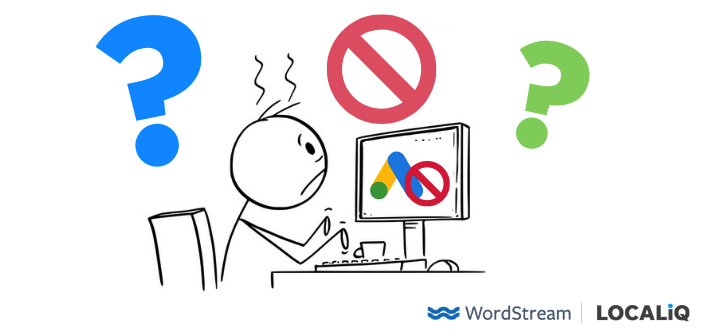Continued uncertainty brought about by the ongoing effects of the pandemic, Brexit, war in Ukraine and of course inflation at levels not seen in generations mean there is increased demand for data science advancement – particularly for more frequent and granular measurement and forecasting. The competitive advantage gulf between companies pursuing data-driven strategies and those that are not will widen, putting more pressure on the laggards of their respective industries.
With so many potential inputs and outcomes, it’s critical for brands to define their predicted outcome space. By using their leading indicators to describe and expose complex, multi-dimensional scenarios that can then be narrowed to the most likely scenarios, it’s possible to eliminate the noise and allow brands to be reactive and responsive – all underpinned by data. Data science can take the subjectivity out of the human decision and support a discussion about what to do, rather than debating what is likely to happen.
Tell us about your role – what does a typical day look like for you?
The effects of changes in identity-based marketing will be felt most acutely when Google finally turns off third-party cookies as it’s still the biggest provider. Companies whose journey to effectiveness without third party data is not already well underway, or isn’t working, need to act fast. It’s essential this is coordinated with an overall data and analytics strategy to ensure privacy and customer management absolutely lives up to what it promises to deliver, while still achieving the 10-20% gains available through marketing effectiveness.

Interviewing is taking a lot of time at the moment as we’re growing at a phenomenal pace. Fundamentally, we’re a people business and recruitment is key to our success. The continued commitment to hybrid working means we can attract a broader range of talent, both geographically and those that need more flexibility balancing work and other commitments. Diversity in the workplace is as important to us as diversity in data – one tends to beget the other – and I’m proud of the make-up of our team.
How can brands navigate the post-cookie world?
For example, the pursuit of real-time analytics can easily increase data management costs tenfold, but the refresh frequency isn’t necessary for strategic decisions. For operational decisions, the weight of data available is a key consideration and that often means time is an essential dimension to ensure observed changes are really trends rather than anomalies.
Conversely, analysis and decision making that isn’t frequent enough can have a significant impact on the future fortunes of a business. It’s often a fine balancing act that needs an eye on both the now and the next few years. Those putting the work and investment into quality are the ones most likely to emerge as winners.
I’m acutely aware I can’t do everything, which means I’m careful to choose what I spend my time on. This is equally true in both my professional and personal life. I try to make sure that whatever I’m doing, I’m completely present. So if that’s drawing with the kids, working on a client on a new brief, or working out, it has my undivided attention. Being busy can result in late nights from time to time, where I’ll read and engage more with the wider industry, but overall, I continue to advocate for and develop my skills in achieving the often-elusive work/life balance for both myself and my team.
How can brands utilise data science to understand the changing nature of consumer demands?
For example, one of the biggest challenges brands face is making sense of the sheer amount of data they have at their disposal. Simply monitoring trends isn’t enough to make solid business decisions. However, the move towards ever-more complex models brings its own challenges. A glut of easy to acquire but not particularly signal-intensive data sources won’t shift the dial commercially and just analysing more ‘stuff’ is costly.
We advocate for the use of an analytics framework built on a modern version of econometrics that is forward-looking and encompasses frequent, granular data, as opposed to the historically typical econometric approach of looking back every year or two. This allows for a shared language and shared view of ROI (I could write a book about how ROI is used and misused), which is critical to a business-wide understanding and ensures measurement relates from period to period. Consistently using a range of methods ensures strategic and operational decisions are sourced from the same, single version of the truth.
The main issue with the death of cookies is that it exposes an over-reliance on an imperfect solution and a misheld belief that digital’s measurability equates to its power. We have never had a complete view; attribution was always flawed and so as marketers, we’re forced to return to the craft of marketing. This in itself will help to build trust further than the sense of ‘big brother’ that has pervaded for the last decade or so, though measurement of marketing activity remains critical to making the best decisions.
In recent years, companies have increasingly become aware of the scale of their data and crucially, that it is an asset ready to be harnessed. The question, often, is “how?”. My short answer is to put people back at the centre of the data and to focus on data quality. That means empowering and enabling people in their decision-making through better access to quality, relevant insight. Easier said than done, of course, but adopting this central tenet as the guiding principle will help businesses deal with challenges such as managing uncertainty or moving towards real-time measurement.
Matt Andrew is UK MD of global data science & AI firm Ekimetrics. I recently caught up with him to discuss the role of data science within marketing, how brands can effectively harness their data, and why he foresees an acceleration of the trend towards data in-housing.
For those starting out, I think it’s important to realise that there is a difference between the academic application of data science and the business sense needed in different fields and sectors. So, I’d say that finding somewhere that gives you plenty of opportunity to learn and develop that commerciality is critical.
How should brands use data science to forecast and effectively plan?
Working with other data scientists with both breadth and depth of experience in technology, methodologies, sectors and applications exposes you to a world of possibilities that will help you to decide which specialist routes to pursue. This will help you to learn faster and supercharge your development.
This agility can be reflected in the planning process. We’ve helped many clients move from an annual planning process to quarterly planning that enables a far more agile approach to marketing and business decision making.
I like to be hands-on with clients and stay close to the work. This means in a growing company like Ekimetrics, my working days are busy with meetings (mainly with or about clients but some internal, especially with our global teams), proposals, client pitches, reviewing client work, agreeing marketing content and so on.
The main issue with the death of cookies is that it exposes an over-reliance on an imperfect solution and a misheld belief that digital’s measurability equates to its power.”
What advice would you give to someone starting out in your industry?
And with that in mind, the trend towards in-housing is likely to accelerate as brands recognise the value of their data asset and seek to protect it and capitalise on it – at scale. Tearing down the walls between those siloes can be difficult to achieve without a single-minded strategy that delivers control and accessibility to data in both an agile and holistic way. But the days of outsourcing everything are probably numbered. And so the question becomes one of how best to deploy specialist expertise – that is hard to recruit – to enable the best in-housing solution.
Clearly no-one wants to flip-flop or be paralysed by indecision, but a more agile approach is essential. The pandemic taught us that we’re capable of being agile (although for many this was unplanned and much more ‘seat of the pants’ than businesses can reasonably sustain). But planning for uncertainty creates resilience, with the ability to act on emerging trends. Ultimately, the use of data can help you to take bold decisions with confidence in the likelihood of the outcome.
Critical leading indicators – those changes in behaviours or macro-economic circumstances – need to be identified and measured regularly, and in the context of the specific business at a customer, category and market and level.
How do you see your industry evolving in the next 12 months?
Data science is such a broad industry today that it’s possible to specialise not just in the maths or data wrangling but specific fields and sectors too. For example, we work with a lot of very well-known brands across travel and hospitality, FMCG, media, telcos, financial services and automotive. We primarily support these brands in developing their marketing effectiveness, and we’re increasingly seeing a demand from businesses for consultancy regarding data transformation projects. Each has its own language, specific KPIs and relevant levers and there are many more disciplines outside of those.
However, C-suite buy-in and an incremental approach to development is critical. If a business wants to establish a robust and considered programme then it needs to become part of the culture and operating model. Constantly building capability and delivering value along the way is crucial to prove the investment, bring genuine and impactful change and avoid the scrap heap of failed good ideas.
Finally, the thorny issues of sustainability in data science, especially in the face of the continued exponential proliferation of data, and ethical AI will continue to come to the fore as businesses try to derive best value with minimal environmental impact or bias.
Deriving meaning from these indicators, how they interact, and their relative weight is essential input into the planning process. And while sourcing data and building processes and repositories are essential, one of the biggest issues in data science is ensuring you’re crystal clear on what difference new information will make to business decisions. There’s absolutely no point investing substantially in hyper-responsive data and analysis if it doesn’t tell you much or your organisation doesn’t have the appetite or ability to adapt strategies as a result of the insight.






